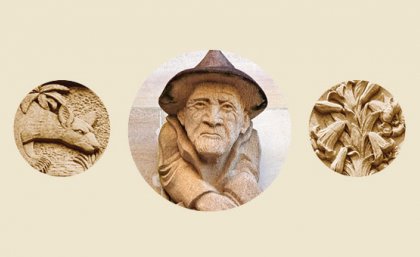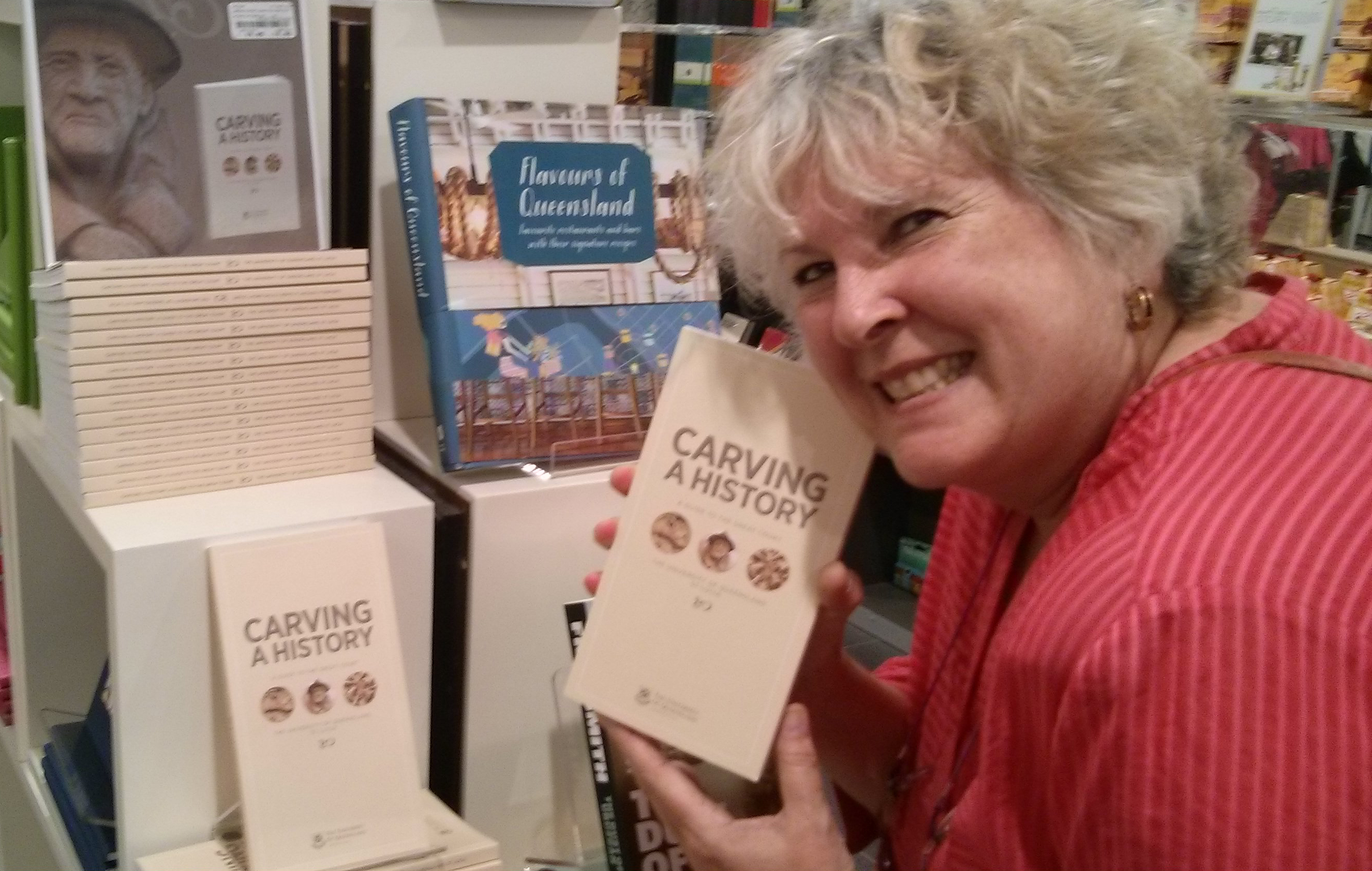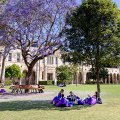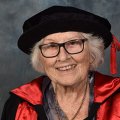
The Great Court at The University of Queensland is “a secret Brisbane doesn’t know it has”, says the editor of a new guide to the St Lucia landmark launched today.
Suzanne Parker worked on Carving a history: a guide to the Great Court over the past 12 months, but sandstone carvers and architects had been working on the subject matter for the previous eight decades.
The guide is published as a book ($19.95) and a free phone app.
“The Great Court is such a hidden treasure,” Ms Parker said.
“It has more than 1000 stone carvings, and once you know the story behind them all – it’s just such an amazing achievement.”
A database on the carvings had been held at the UQ Art Museum since UQ’s 2010 centenary, and several forces combined last year to publish the information in a guidebook.
 “A book on the Great Court was published about 25 years ago, but we started again from scratch, with different objectives,” Ms Parker said.
“A book on the Great Court was published about 25 years ago, but we started again from scratch, with different objectives,” Ms Parker said.
She worked closely with Rhyl Hinwood, the University Sculptor from 1976 to 2011 who attended the book’s launch at UQ.
“(The Great Court) is an opportunity to celebrate the achievements of staff and graduates of the University and the uniqueness of the state of Queensland,” Dr Hinwood said.
The book is divided into five sections, in line with the original plan for the Great Court carvings: Queensland history, Queensland flora and fauna, Indigenous culture, coats of arms and academic traditions.
“Some of the animals depicted in the sandstone carvings existed when the Great Court was being planned in the 1930s, but are now extinct, or close to extinct – for example, the brush-tailed bettong,” Ms Parker said.
“There’s a dinosaur frieze above the entrance to the Richards – geology and mineralogy – building.
“Most of the animals and plants depicted in this frieze were probably in existence when the sandstone in which they are carved was itself being laid down in a Mesozoic lake near Helidon, 140km west of Brisbane.”
 The guide and app feature maps that identify and reference every one of the Great Court’s carvings.
The guide and app feature maps that identify and reference every one of the Great Court’s carvings.
“I would be really happy if the book or app inspired people to visit UQ, perhaps arriving by ferry, having a picnic or a café meal on campus, and then spending some time exploring the Great Court,” Ms Parker said.
“The book was a really worthwhile project. It was fantastic to have the opportunity to create something that pays tribute to all the amazing people who have contributed to the wisdom and artistry of the Great Court over many decades.”
A video and more information on the Great Court is here. The app is available here.
Contact: Fiona Cameron, UQ Communications, communications@uq.edu.au, +61 7 3346 7086; Suzanne Parker, s.parker1@uq.edu.au, +61 7 3346 7886; Michael Duthie 0413 601 248.

.jpg?itok=A3VEKM1Y)








